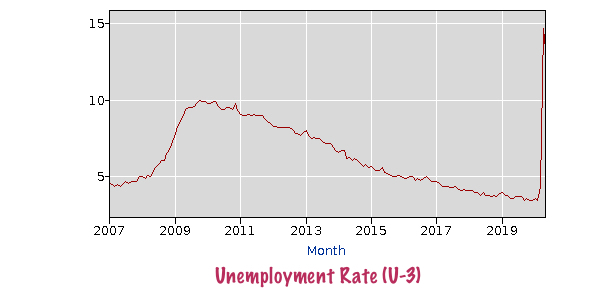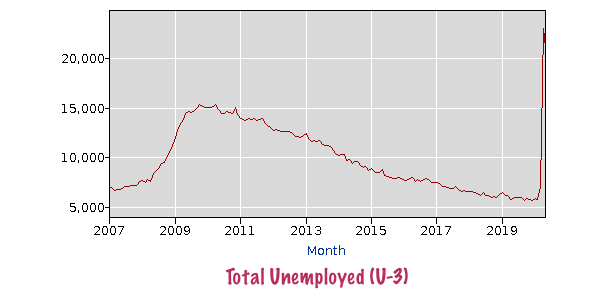From David Ruccio There are lies, there are outrageous lies, and there are statistics. — Robert Giffen, Economic Journal (1892) Are U.S. unemployment numbers rigged? Sure, they are! They’re not rigged in the way Paul Krugman implied last Friday (“This being the Trump era, you can’t completely discount the possibility that they’ve gotten to the BLS”). Or in the way former General Electric CEO Jack Welch suggested back in 2012 (when he asserted that the Obama White House had manipulated the job figures for political gains). Or in the way Donald Trump used to say the unemployment rate was “phony” (“The number is probably 28, 29, as high as 35 [percent]. In fact, I even heard recently 42 percent.”) until, of course, he became president and declared the rising jobs numbers a “blowout” (even
Topics:
David F. Ruccio considers the following as important: Uncategorized
This could be interesting, too:
tom writes The Ukraine war and Europe’s deepening march of folly
Stavros Mavroudeas writes CfP of Marxist Macroeconomic Modelling workgroup – 18th WAPE Forum, Istanbul August 6-8, 2025
Lars Pålsson Syll writes The pretence-of-knowledge syndrome
Dean Baker writes Crypto and Donald Trump’s strategic baseball card reserve
from David Ruccio
There are lies, there are outrageous lies, and there are statistics.
— Robert Giffen, Economic Journal (1892)
Are U.S. unemployment numbers rigged? Sure, they are!
They’re not rigged in the way Paul Krugman implied last Friday (“This being the Trump era, you can’t completely discount the possibility that they’ve gotten to the BLS”). Or in the way former General Electric CEO Jack Welch suggested back in 2012 (when he asserted that the Obama White House had manipulated the job figures for political gains). Or in the way Donald Trump used to say the unemployment rate was “phony” (“The number is probably 28, 29, as high as 35 [percent]. In fact, I even heard recently 42 percent.”) until, of course, he became president and declared the rising jobs numbers a “blowout” (even though he and his economic advisers used some questionable math) and, most recently, the falling unemployment rate a “great day” (for George Floyd, whom Trump said was “looking down right now and saying this is a great thing that’s happening for our country,” and “for everybody”).
No, the jobs numbers are not manipulated in those ways. They’re rigged—in my view, much more seriously—in terms of the ways the various categories are defined and measured and the manner in which the data are collected. And, of course, the ways values are imputed to the rising and falling numbers.
Let’s start with the last point: why should we believe, as most news outlets and Trump himself proclaimed (including FiveThirtyEight, which declared it “shockingly good”), that the much-publicized recent fall in the official unemployment rate (from 14.7 percent in April to 13.3 percent in May) is a good thing? We’re still in the midst of the COVID-19 pandemic, when workers should be paid to stay home. Instead, they’re being forced to have the freedom to return to selling their ability to work—because their employers want to make profits by hiring them and workers themselves are finding it difficult to get by on unemployment benefits (when, that is, they’ve been able to obtain them). Why is that something we should applaud?
Moreover, even according to the unadjusted numbers, there were still 21 million unemployed American workers in May. Let’s remember that, at the worst point of the Second Great Depression (in October 2009), the highest unemployment rate was 10 percent and the largest number of unemployed workers was 15.4 million.
As for the rest, the first sign there may be a problem with the unemployment numbers is the admission, in the text of the official report from the Bureau of Labor Statistics, that many workers may have been misclassified. Workers who were “employed but absent from work” were supposed to be counted as “unemployed on temporary layoff” but many, it seems, were not.
If the workers who were recorded as employed but absent from work due to “other reasons” (over and above the number absent for other reasons in a typical May) had been classified as unemployed on temporary layoff, the overall unemployment rate would have been about 3 percentage points higher than reported (on a not seasonally adjusted basis).
Fixing that error would raise the official unemployment rate in May to 16.3 percent.
Now, let’s consider what the official statistics mean and don’t mean. This is an exercise I used to do with all of my students, most of whom had no idea how the unemployment numbers were defined and calculated, even after taking many mainstream economics courses.
The official or headline unemployment rate is actually one of 6 rates reported by the Bureau of Labor Statistics, referred to as U-3. To be counted as unemployed according to the U-3 rate, a worker has to (a) have had a job, (b) been laid off from a job, and (c) be actively looking for a new job. (In addition, they’re not counted if they’re in the armed forces, in prison, or undocumented.)
The rates and total numbers of officially unemployed workers, from January 2007 to May 2020, are illustrated in the two charts below.
So, who is not included in these numbers? The headline unemployment rate doesn’t include workers (such as high school and college graduates) who are looking for their first jobs. It doesn’t include workers who are involuntarily working at part-time jobs (working any number of hours, including 1 hour a week, counts as “employed”). And it doesn’t include workers who want a job but are “discouraged” and therefore have given up actively looking for a job.
The so-called U-6 rate includes two of those groups, in addition to the unemployed workers that form the U-3 rate: workers who are employed part-time for “economic reasons” and workers who are considered “marginally attached” to the labor force.
As readers can see, the U-6 rate (the green line in the chart above) is always much higher than the U-3 rate (the blue line). In May, it was 21.2 percent, compared to the rate of 13.3 percent that was widely reported in news outlets.
And then there’s the group of 4.8 million workers who were considered misclassified in the most report. Add them all together and the United States actually had a total of 45.4 million workers who were either unemployed or underemployed in May. That’s exactly one-third the size of the entire employed population in the United States.
But that U-6 plus misclassified total still doesn’t adequately capture the dire straits of American workers. In addition to first-time job-seekers who have unable to find a job (some unknown portion of an estimated 3.8 million high-school graduates, 1 million who graduated with associate’s degrees, and 2 million with bachelor’s degrees), it doesn’t include any of the estimated 8 million undocumented workers who have lost their jobs.
The only conclusion is that the official unemployment figures are in fact rigged—not by any particular malfeasance or corrupt intervention into the Bureau of Labor Statistics, but by the way the unemployed are defined, measured, and counted. The reserve army of unemployed and underemployed workers is actually much larger than the figures cited by the White House and widely reported in news outlets.
In the end, what matters for American workers is less that the statistics are biased. It’s more that the prevailing economic institutions in the United States—which use and abuse them as wage-slaves, no more so than during the current pandemic—are rigged against them.



